Stands for: Follicular Unit Extraction
Most Popular Choice
Cost: £3,000 – £7,000
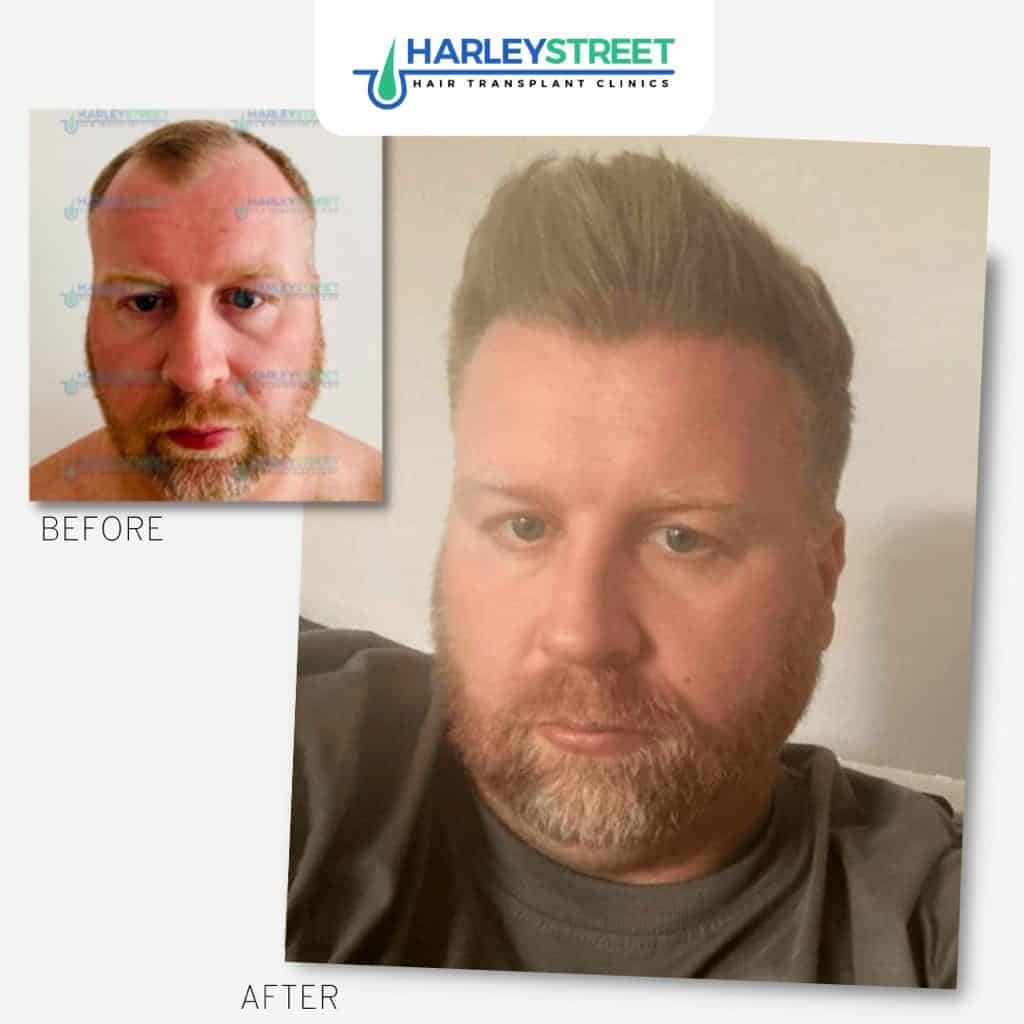

Stands for: Follicular Unit Extraction
Most Popular Choice
Cost: £3,000 – £7,000

A Follicular Unit Extraction (FUE) hair transplant is a minimally invasive surgical procedure that looks to promote new hair growth on your scalp and/or face. Whether you are concerned about your receding hairline, eyebrows, or beard, an FUE treatment is often the perfect solution for many causes of thinning hair.
All of our hair transplant procedures, including FUE surgery, crown hair transplant etc, are conducted by certified medical professionals with years of experience in hair restoration. Book your free consultation today and end your hair loss concerns!
The FUE transplant procedure looks to take anywhere between 1,000-6,000 individual hair follicles from the donor area and implant them onto the balding/thinning area of your scalp. This treatment, conducted by one of our hair restoration surgeons, in essence “transports” hair that doesn’t get affected by the hormone DHT (which is one of the main causes of hair loss) onto the area of your scalp that requires hair, thus leaving a natural result as it is your own hair that is used.
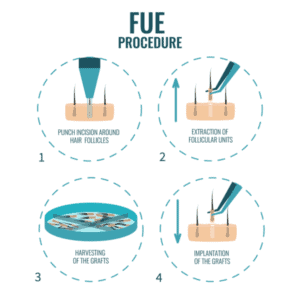
Hair loss is a problem that can affect anyone in the UK. In a 1998 study conducted by Rhodes et. al, results showed 42% of men between the ages of 18 and 49 to show signs of extensive hair loss. With the general scientific consensus being that pattern baldness (androgenetic alopecia) is a result of genetics, this is a problem that many men and women will experience over the course of their lifetime even without external influences such as stress, weight loss, and side effects to medical treatments such as chemotherapy.
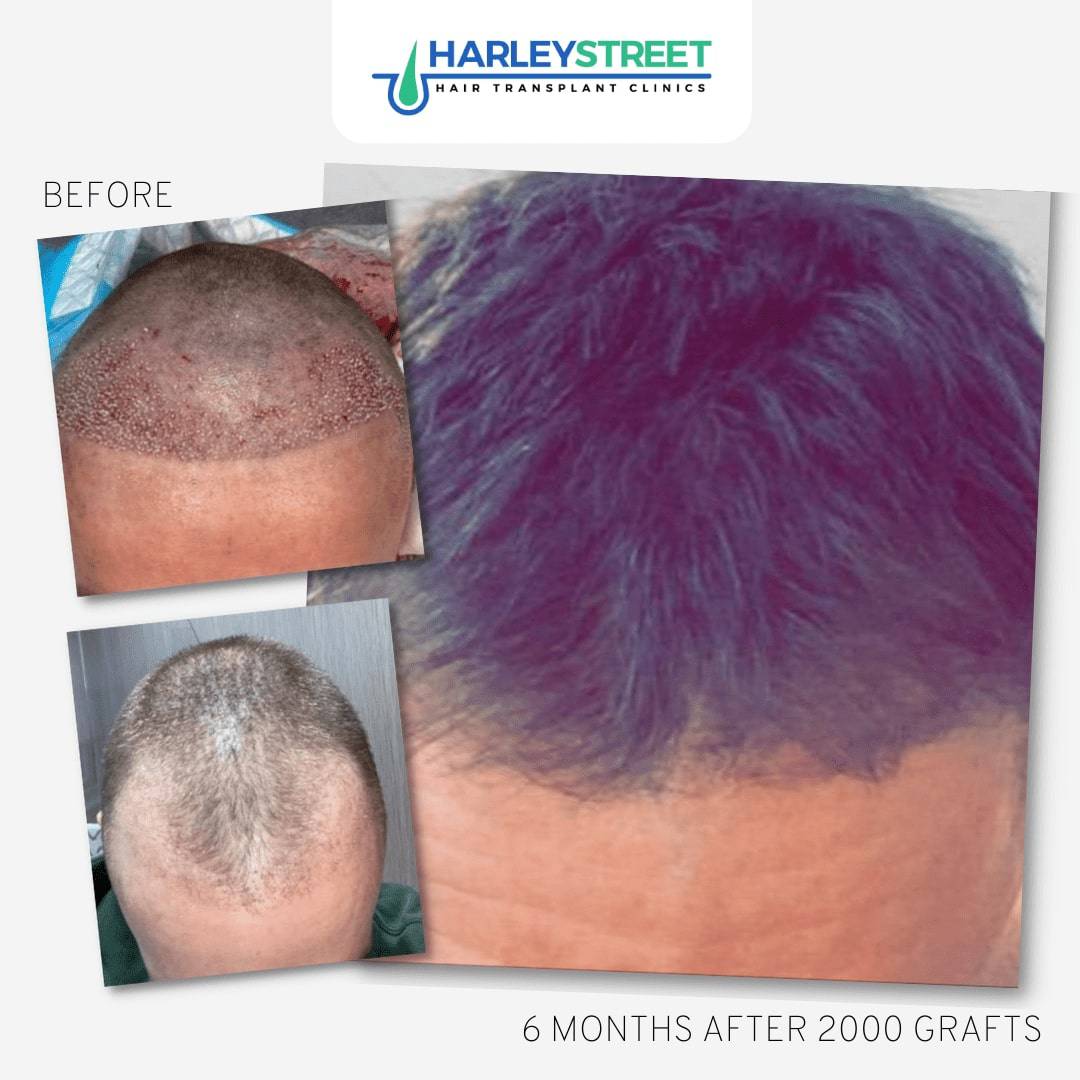
Like many medical conditions, there is no singular explanation for hair loss. However, FUE hair transplants can be used to treat a number of different causes for hair loss:
Whilst there are a number of treatments on the market today, an FUE hair transplant offers a long-term and fuller result than its alternatives.
After you have received your free consultation with one of our hair transplant surgeons, arrive at our clinic on Harley Street. All our patients receive local anaesthetic during hair transplant surgery. During the surgery, you shouldn’t feel anything more than a little bit of pressure; almost like a head massage!
At the beginning of the procedure, the lead hair transplant surgeon will begin by extracting follicular units from the donor area in natural groups of 1-4 (this is called a hair graft). These grafts, or follicular units, are circled by a tiny 1mm punch enabling an accurate and precise incision to be made. The follicular unit is then grasped gently and pulled away from the loose connective tissue that surrounds the unit under the skin.
Once the hair grafts have been taken, no more preparation is required. These small donor hairs are then implanted into the bald area one by one. This process is then repeated over and over again as desired.
As patients are left with tiny 0.8mm – 1mm scars from follicle extraction, as opposed to other hair surgery treatments which make larger incisions. The FUE recovery time is usually between 6-7 days.
Before an FUE hair transplantation, local anaesthetic is administered, so you won’t feel more than a slight pressure during the procedure
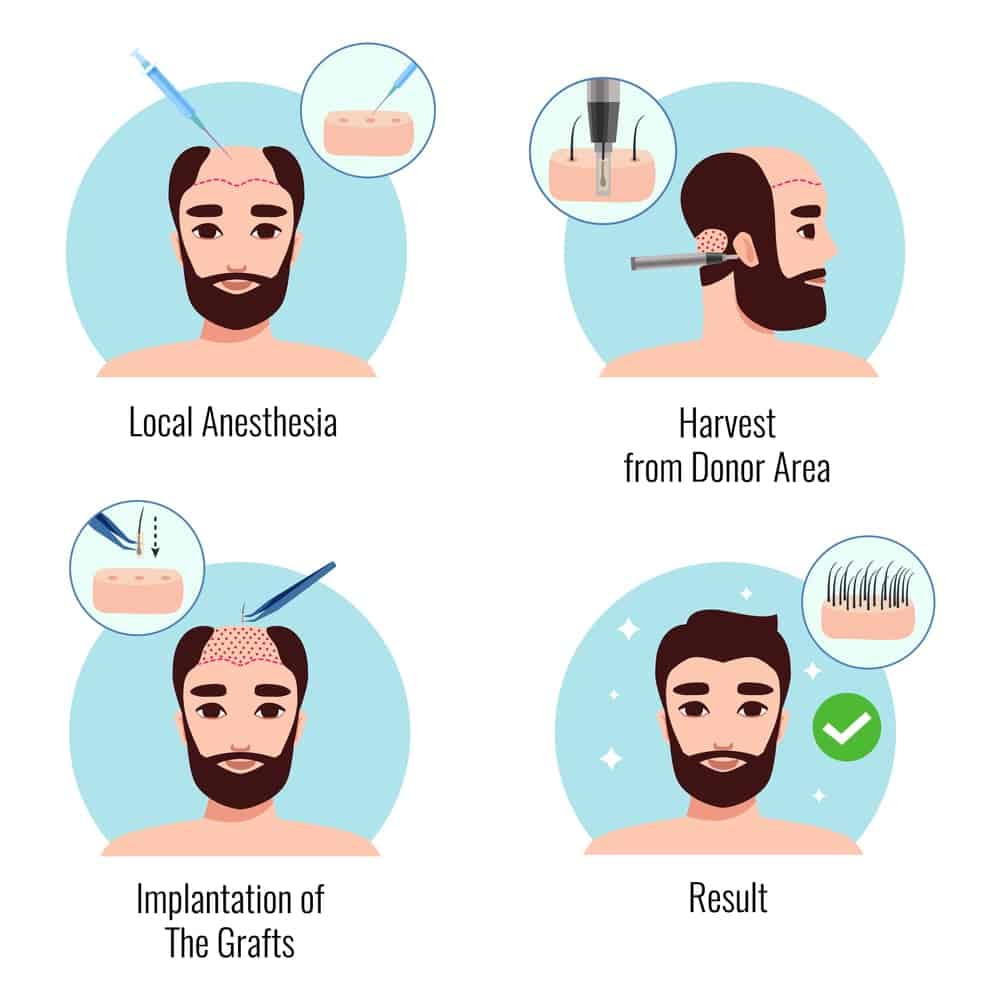
After your free initial consultation, your FUE hair transplant will be performed by one of our certified hair transplant doctors. All of our procedures are performed by doctors with a little help from our specialist nurses, ensuring you receive quality care and treatment.
Meet our Surgeons

There are a number of key differences between the FUT and FUE hair transplant methods.
Often called the ‘strip method’ or ‘strip surgery’, FUT hair transplants take large strips of donor hairs from the patient’s scalp. These strips of hair are then dissected under a microscope before being implanted into the balding area. In comparison, follicular unit excision (FUE) takes much smaller hair grafts from the donor area, not only making it quicker, but leaving most patients with much less scarring than those who have undergone FUT.
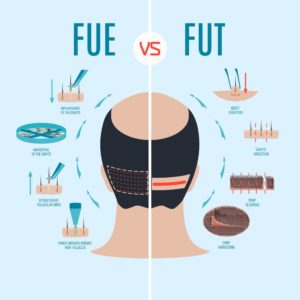
Patient safety comes first and foremost at our clinic. Some great news is that during the procedure, you should not feel any pain at all. This is because the treatment is done under local anaesthetic. You shouldn’t feel a thing!
After your FUE hair transplant surgery, there may be some slight feelings of discomfort. However, as almost microscopic incisions are made on the scalp, you should not expect to feel any tightness as you would with FUT treatments.
After your procedure, one of our hair transplant surgeons will remain in contact with you and discuss the aftercare process with you extensively. If you have any problems, just get in touch with us!
Following your hair transplantation procedure, you will have access to our post-transplant aftercare program and expert guidance, whenever you need it.
It is important to keep the scalp hydrated during the first few days following the procedure in order to protect against infection and minimise scabbing. We provide full instructions for aftercare and are on hand to answer any concerns following your procedure.
It can take 2 to 3 months for the new follicles to take and naturally grow new hair, so regrowth may be uneven at first, but rest assure, you will soon benefit from thicker looking hair. Although every patient’s recovery time and results may differ, most patients see full natural hair growth around 10 months following their procedure.
Between 2,000 and 4,000 hair follicles are extracted during a FUE hair transplant. Naturally, this depends on the severity and area of baldness.
An FUE hair transplant can cost between £3,000 and £7,000+. Again, this is dependent upon the severity of the baldness as the procedure’s cost is directly related to the number of follicles extracted and implanted. Read more about the cost of an FUE hair transplant
Whilst there may be a small bit of shedding soon after your procedure, you should not suffer hair loss (in the same area) after your new hair transplant, however it can take around 6 months for the new hair to start to grow and thicken.
There can be many causes for hair loss. Whether it be female or male pattern baldness, follicular unit extraction can be used to counteract the effects of thinning hair and premature balding. As well as pattern baldness FUE has been used to treat:
After you have received your free consultation with one of our hair transplant surgeons, arrive at our clinic on Harley Street or at any other clinic location we have in the UK. During your hair transplant surgery you will receive a local anaesthetic. You shouldn’t feel anything more than a little bit of pressure; almost like a head massage!
During the surgical procedure, your surgeon will take hair follicles from your donor area and place them onto the area you need them most. After the procedure is completed, we provide an aftercare package which contains all the treatments and instructions on what you should post hair transplant.
After your free initial consultation, your FUE hair transplant will be performed by one of our certified hair transplant doctors. All of our procedures are performed by doctors, with a little help from our specialist team of technicians, ensuring you receive high quality care and treatment.
During the procedure, there is less pain involved in FUE than FUT. This is because no major, or large, incisions are required.
FUE is also quicker than FUT. This is because no separations need to be made under a microscope as is needed with FUT. This means you can tailor your hair transplant around your busy schedule!
After the procedure, FUE typically has a much quicker recovery time when compared to FUT. This is because of the reduced scarring made by the 0.8mm – 1mm punches. Patients are left with tiny scabs that quickly heal as opposed to large incisions made in the scalp.
Patient safety comes first and foremost at our clinic. Some great news is that during the procedure, you should not feel any pain at all. This is because the treatment is done under local anaesthetic. You shouldn’t feel a thing!
After your FUE hair transplant surgery, there may be some slight feelings of discomfort. However, as almost microscopic incisions are made on the scalp, you should not expect to feel any tightness as you would with FUT treatments.
After your procedure, one of our hair transplant surgeons will remain in contact with you and discuss the aftercare process with you extensively. If you have any problems, just get in touch with us!
Between 1,000 and 6,000 hair follicles are extracted during a fue hair transplant procedure. It all depends on the size of the thinning area and the quality of the hairs available on your donor area.
An FUE hair transplant can cost between £3,500 and £7,000+. Again, this is dependent upon the severity of the baldness as the procedure’s cost is directly related to the number of follicles extracted and implanted.

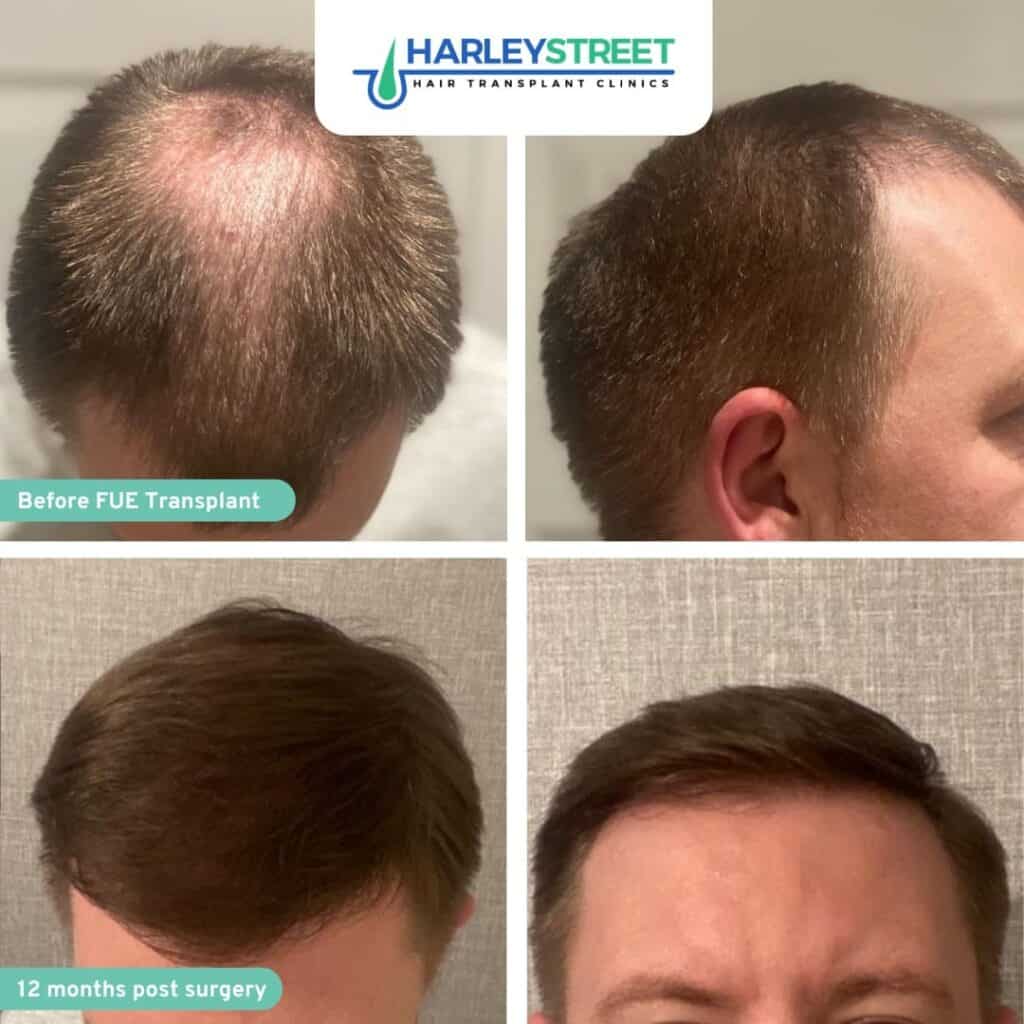
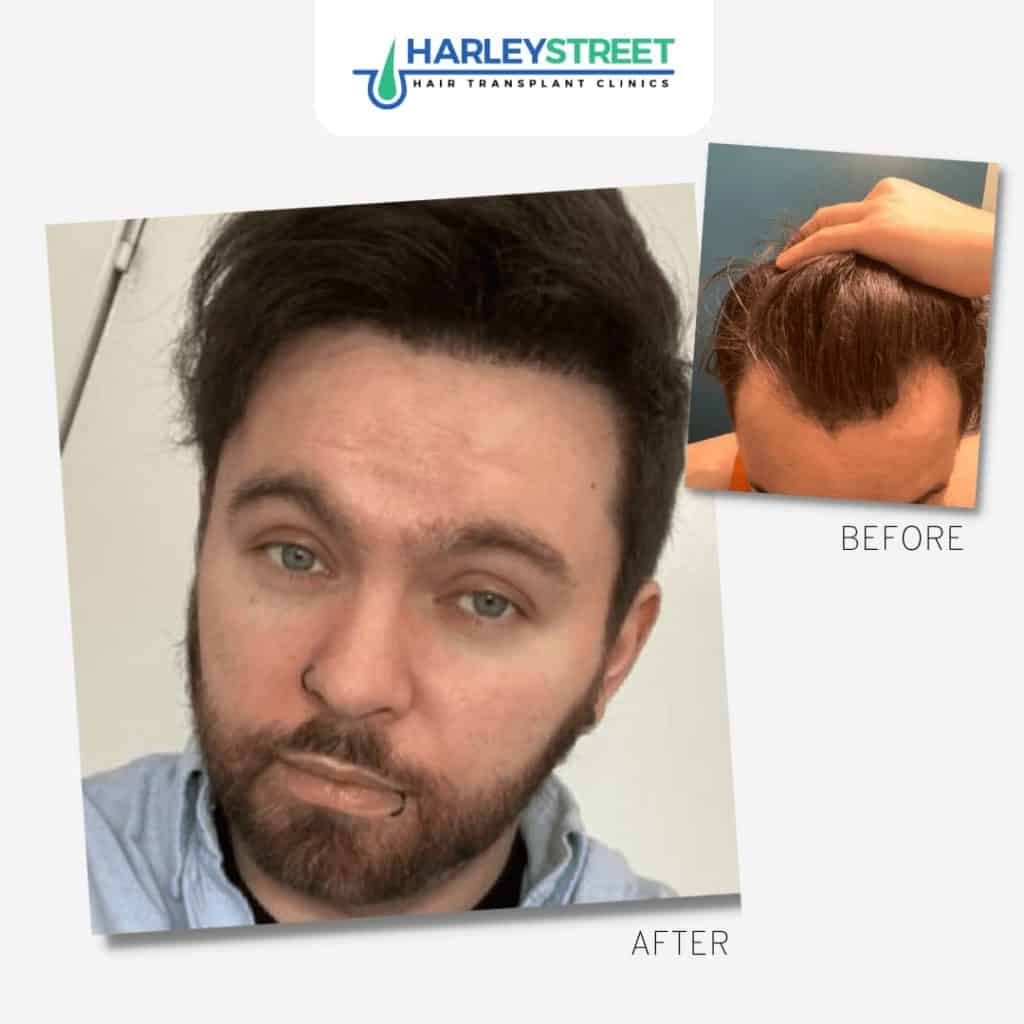

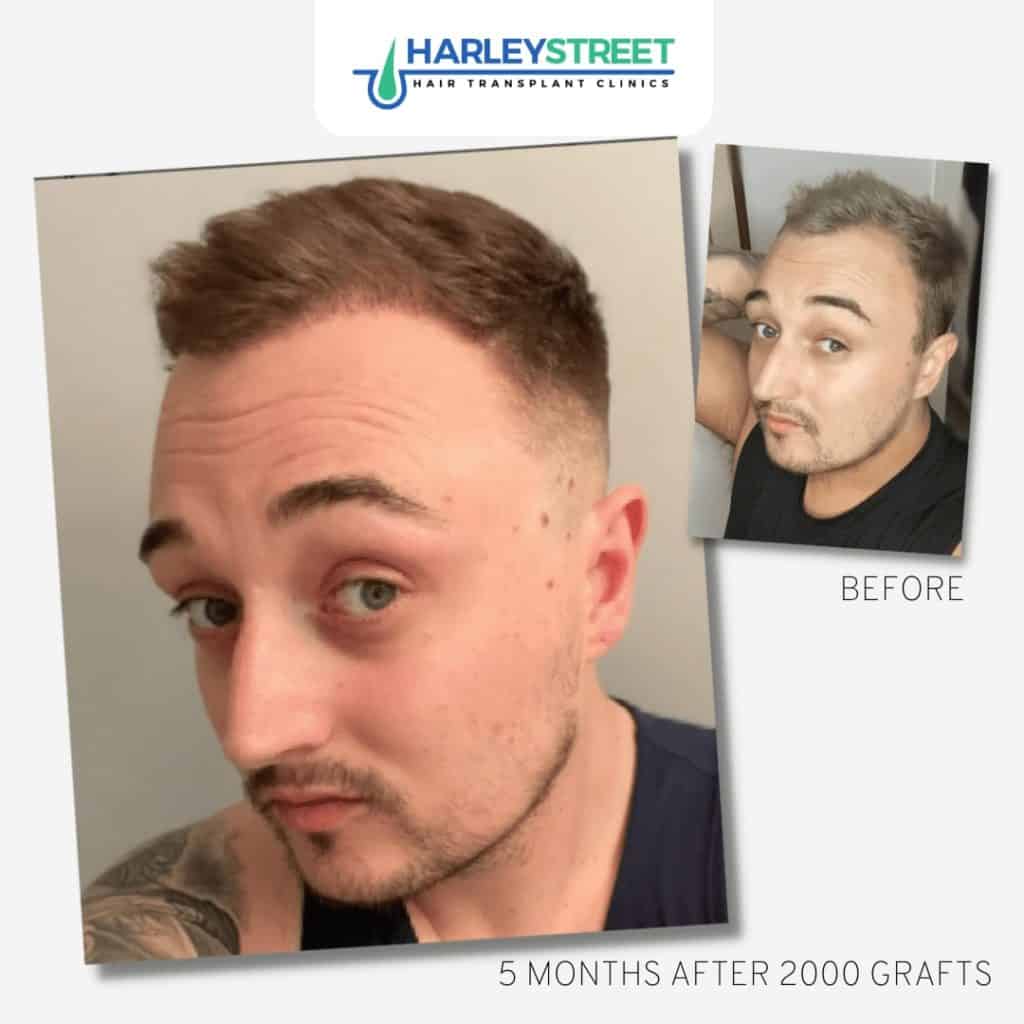
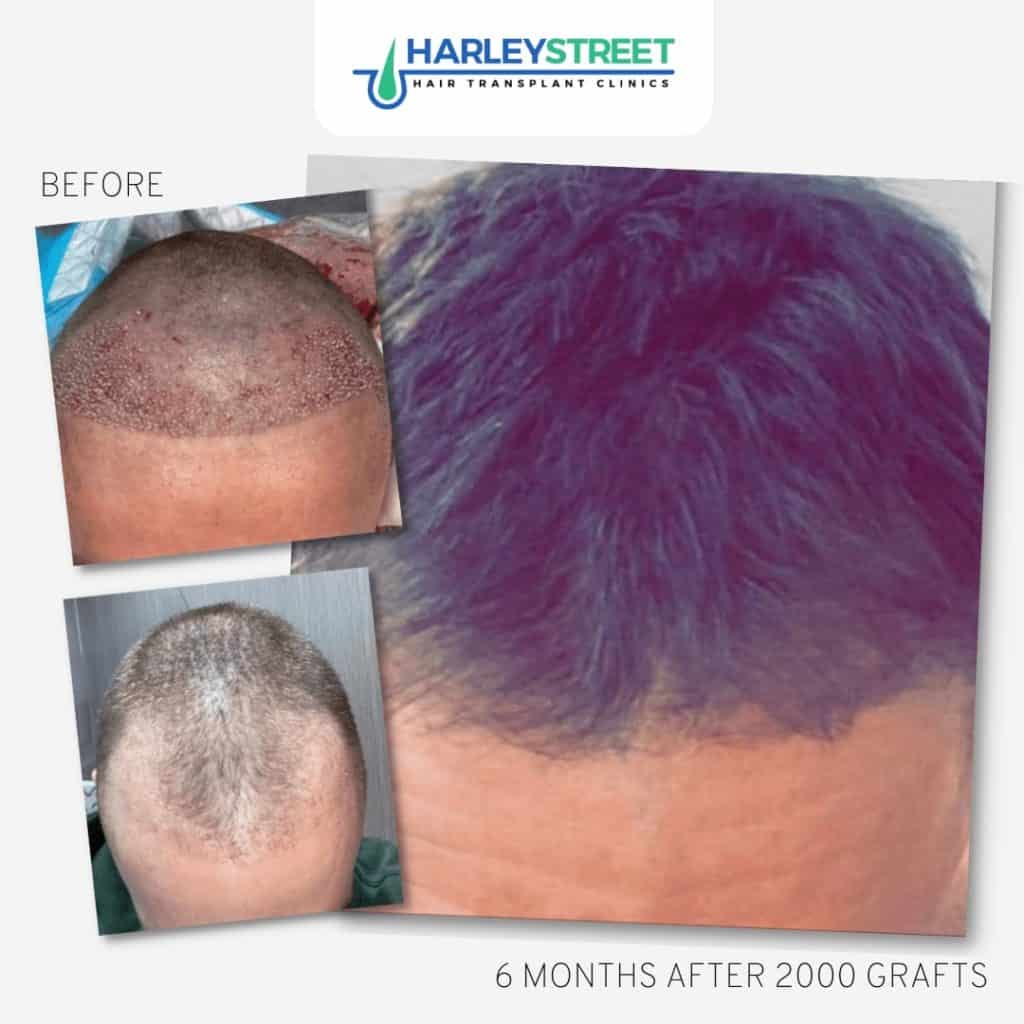
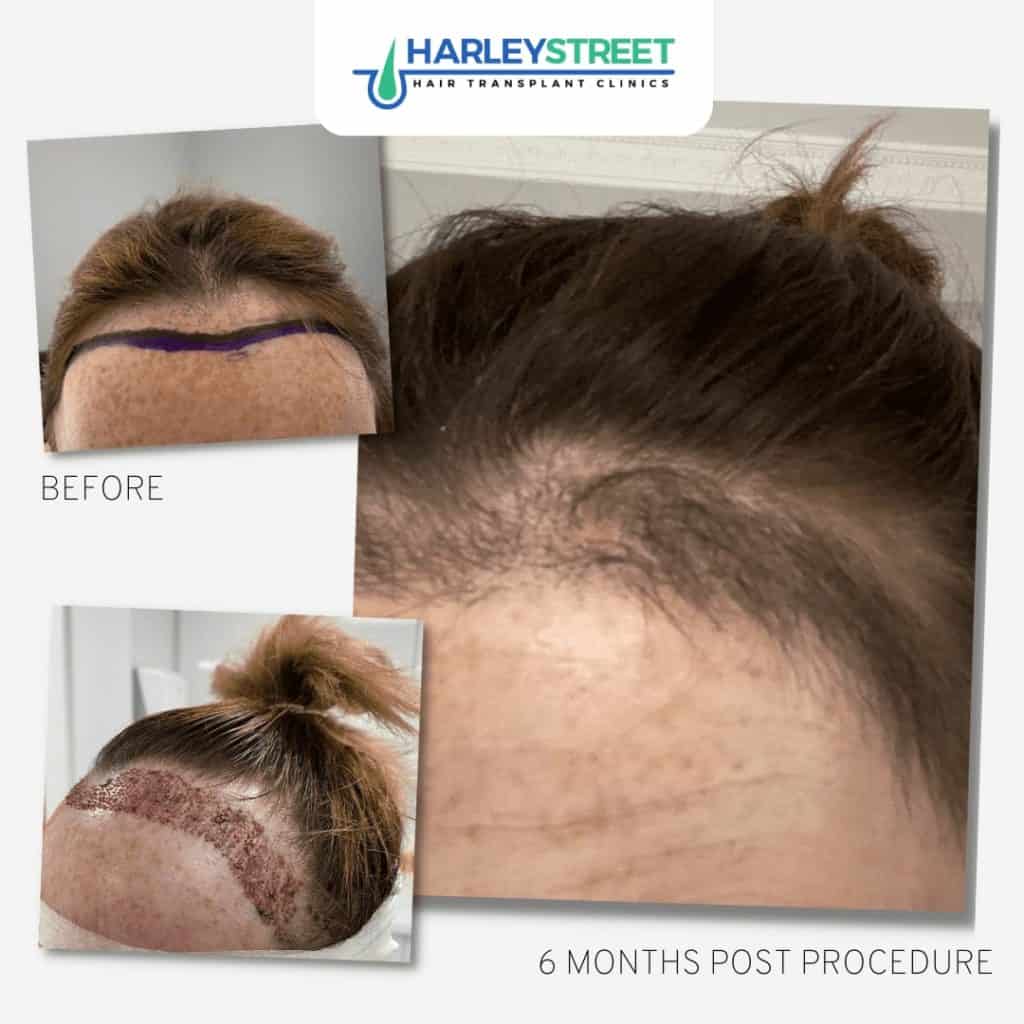

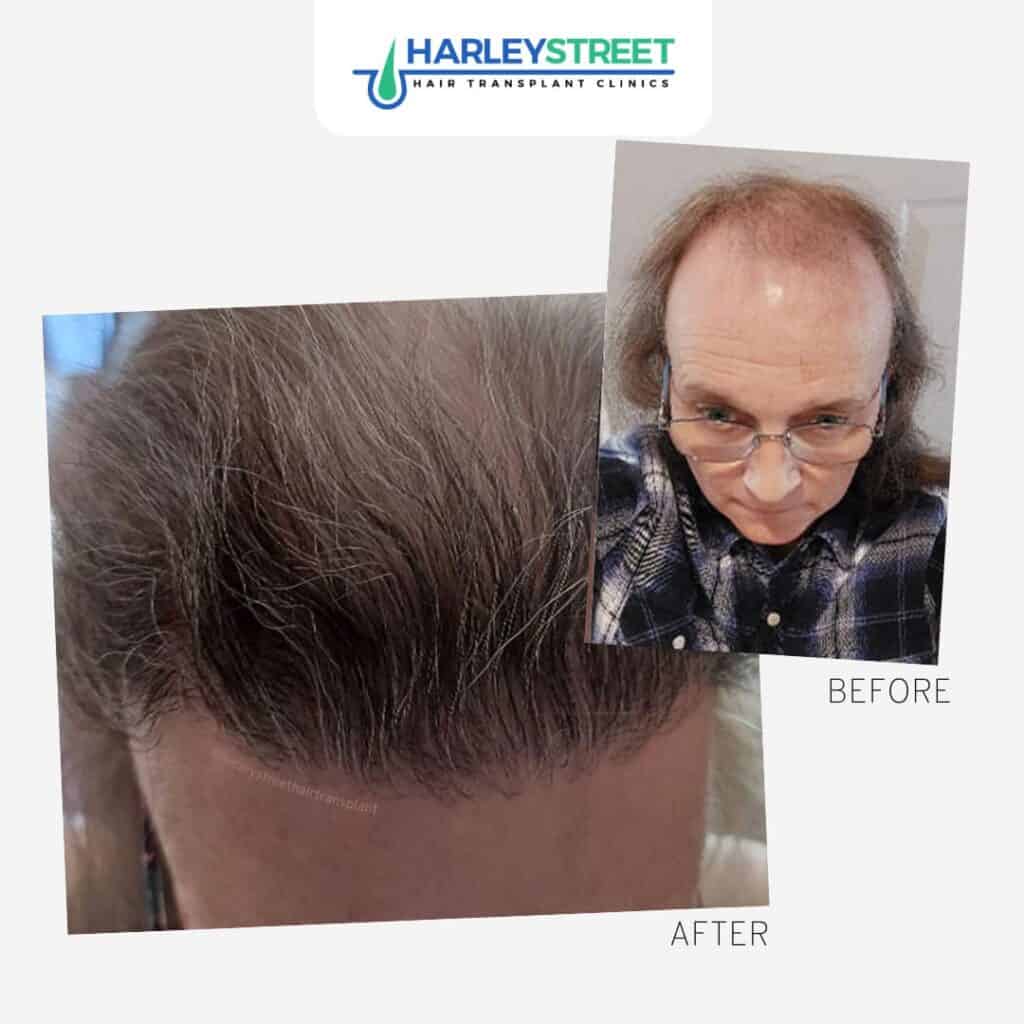
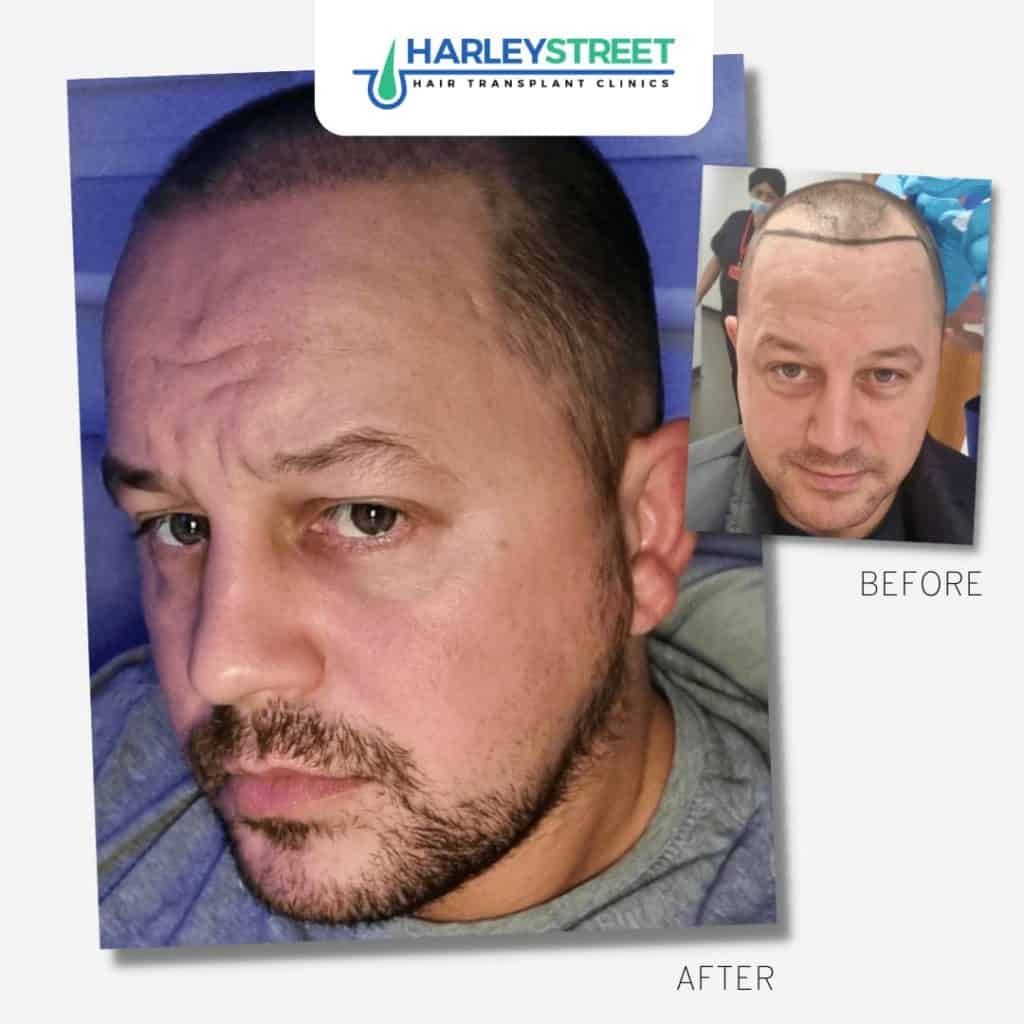
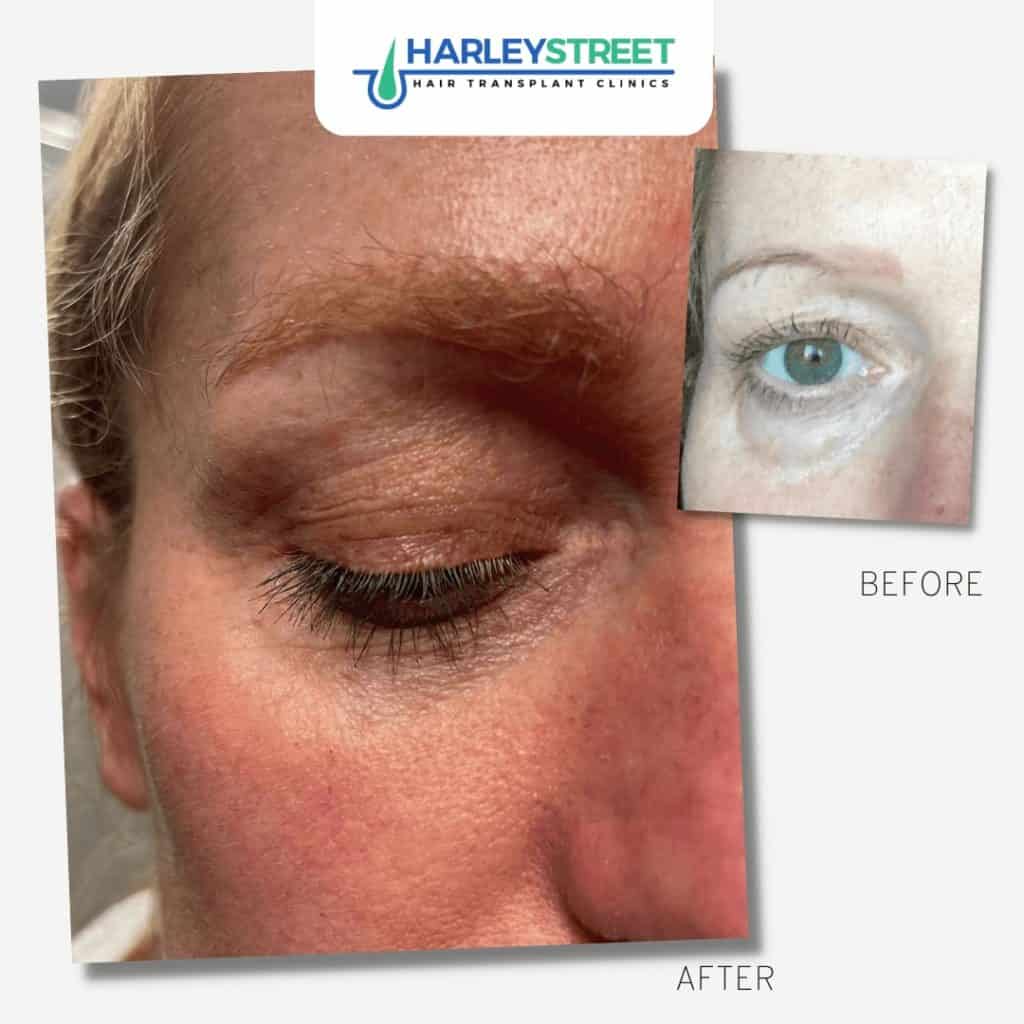
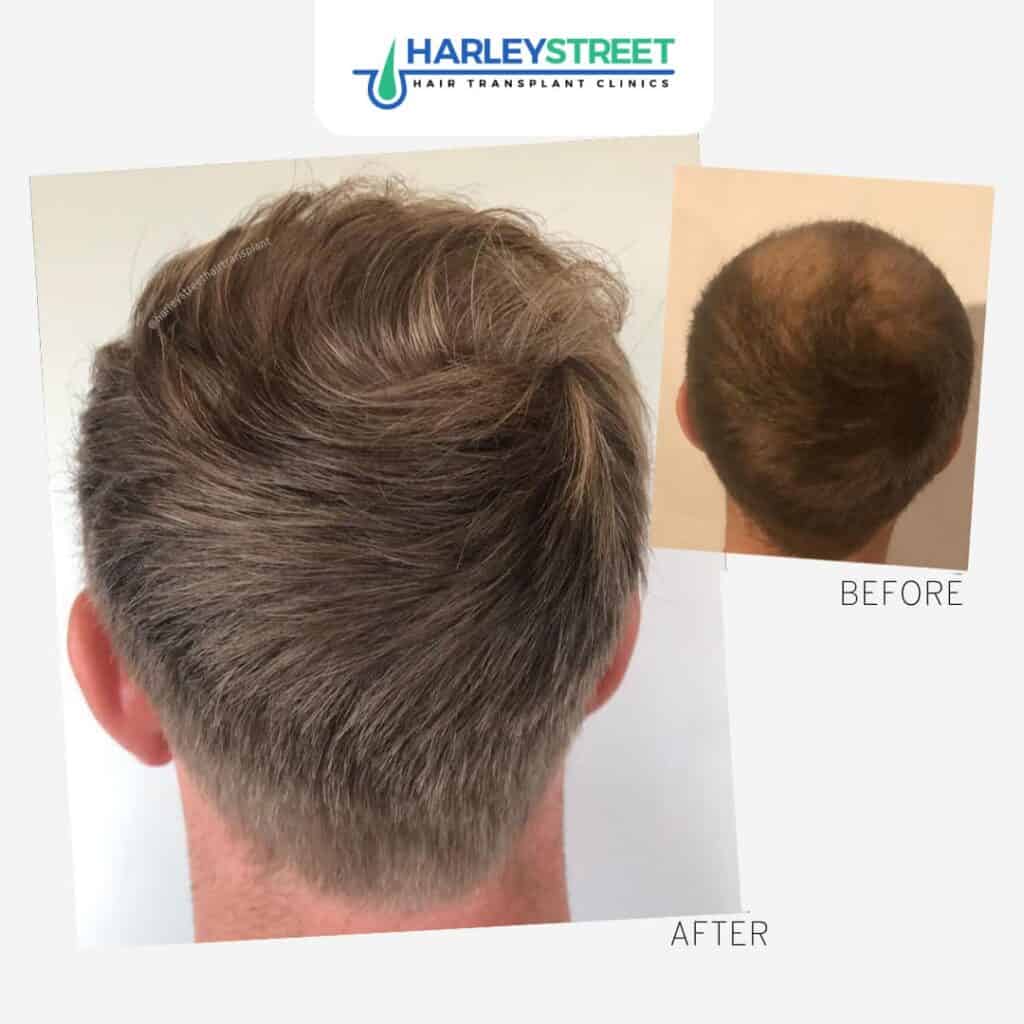
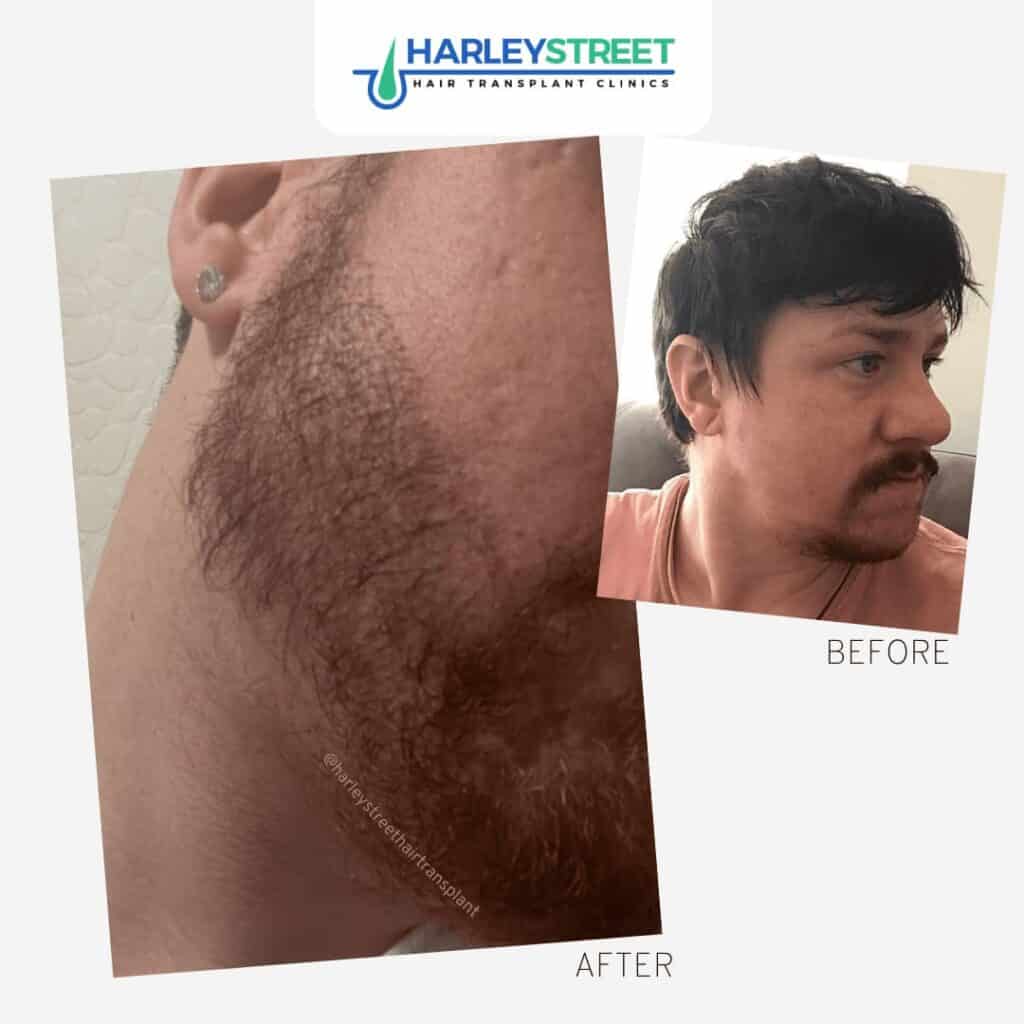
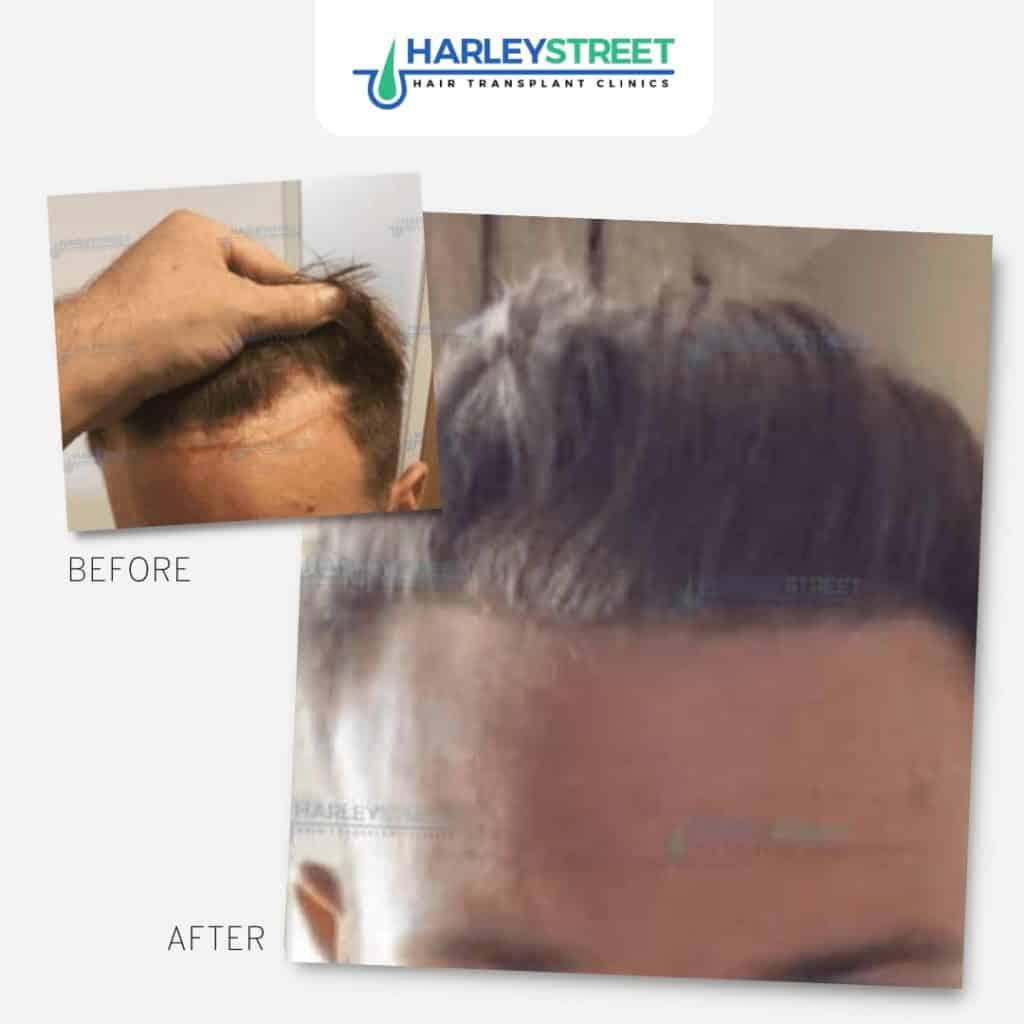
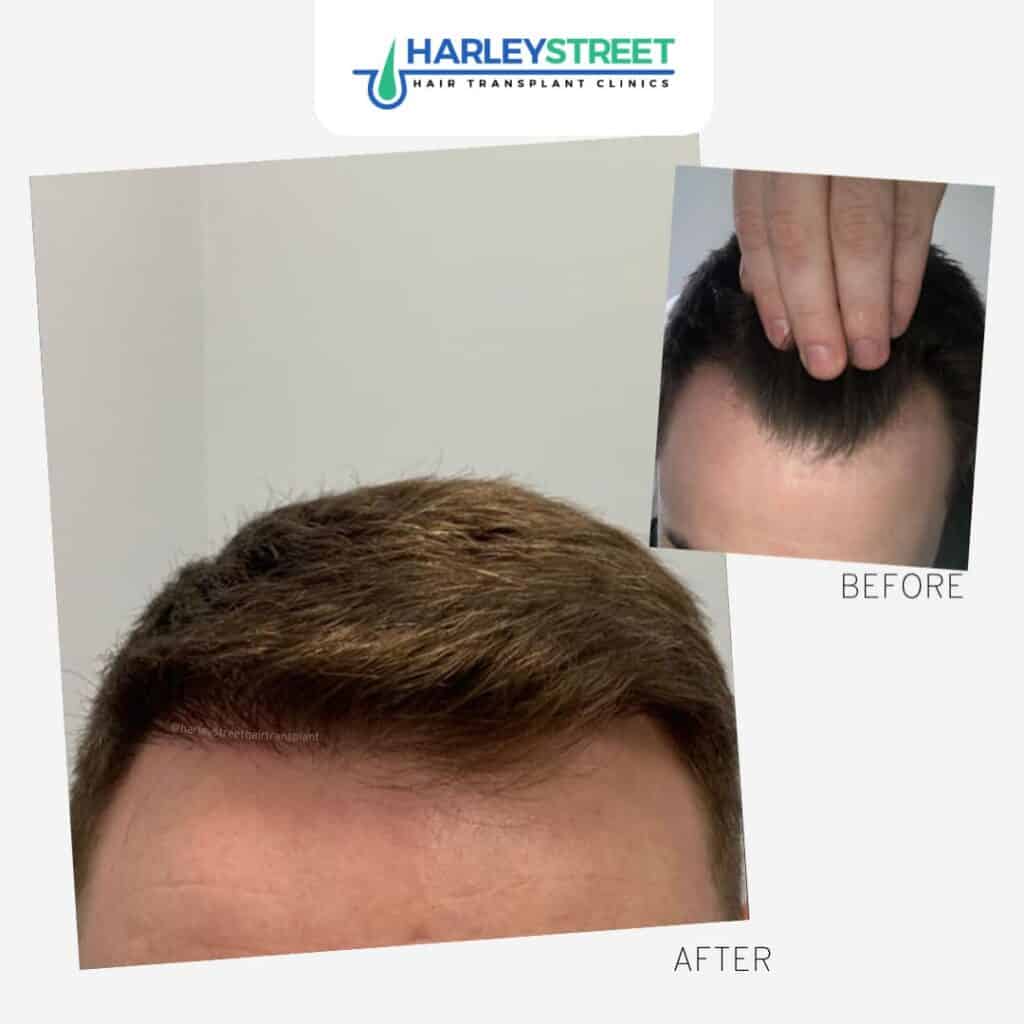
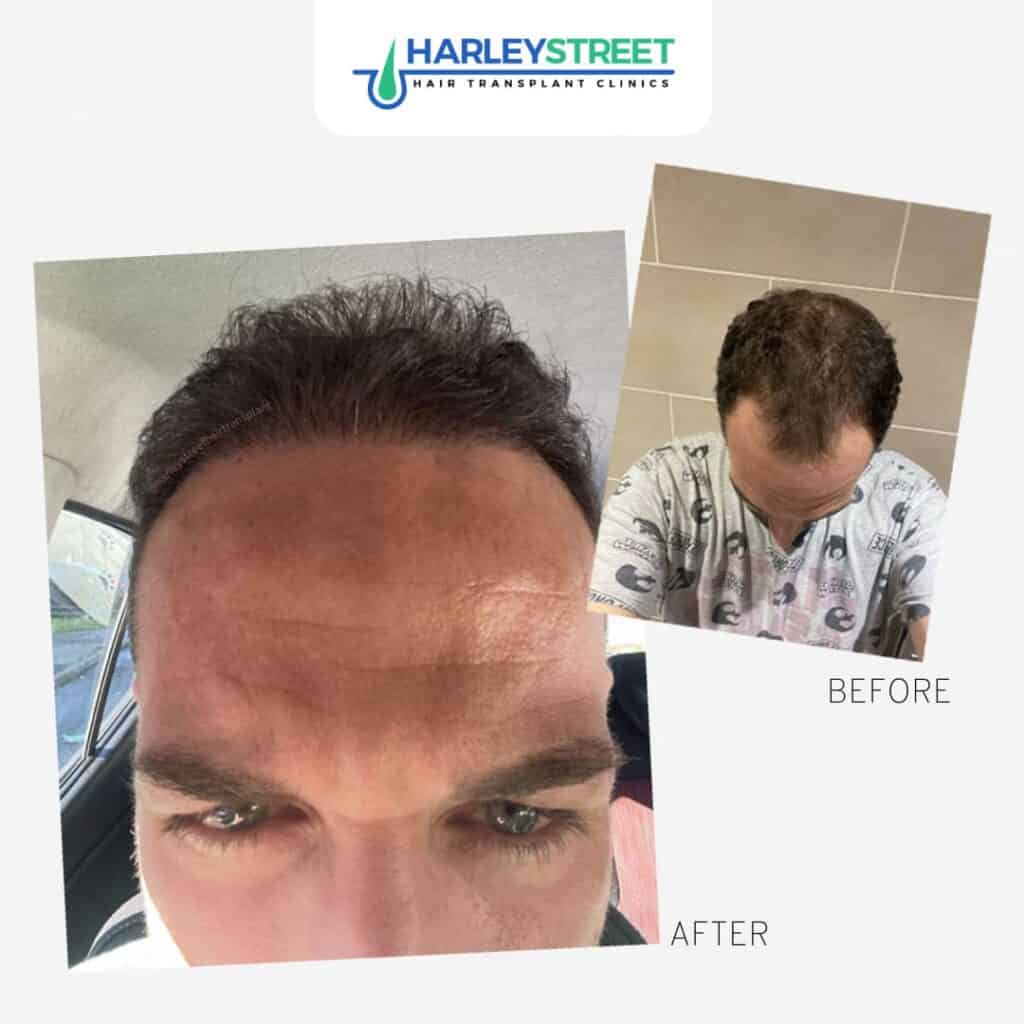
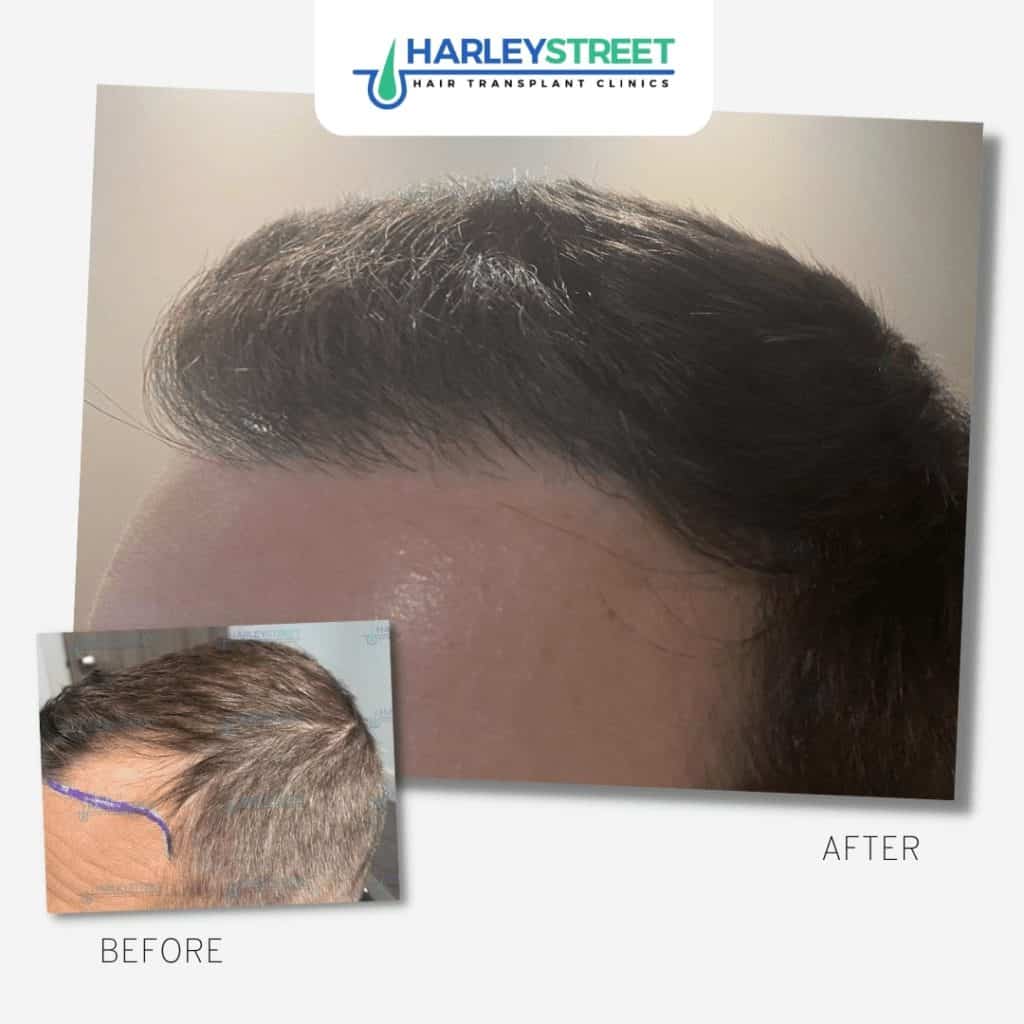
Aside from achieving fantastic results, we believe that keeping in touch with our patients before, during and after their hair transplantation procedure is paramount – it helps to keep our patients feeling calm and in control. We’re always on hand to provide guidance, support and aftercare advice. Time and again, our patients tell us that this is what sets us apart from other clinics.
You can read our great reviews of FUE hair transplants over on Google and TrustPilot